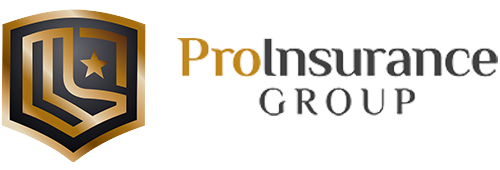
Switching to a new homeowners insurance provider can lead to better coverage, lower premiums, or higher-quality service. However, switching insurance providers also comes with financial risks. Often, homeowners who switch their providers leave a coverage gap after closing the old policy and before the new one goes into effect. During this time, damage caused by theft, storms, fires, floods, and other disasters may be uncovered. A lapse in coverage can even lead to financial penalties from the new lender.
Avoiding these risks requires strategically planning a homeowners insurance change to minimize or eliminate this coverage gap. With insurance costs increasing and 7% of homeowners going without insurance every year, getting the most out of an insurance switch is more important than ever. This article outlines seven easy steps for homeowners to follow when updating their policy.
1. Carefully Review the Current Policy
Before shopping for a new policy, homeowners should recognize their reasons for switching by reviewing their current policy. This review includes assessing current coverage types, limits, premiums, deductibles, riders, exclusions, and other relevant details.
The goal of switching a policy is to maintain necessary coverage while eliminating unnecessary expenses, which requires a careful review. Any additional protections included in the current policy, such as identity theft or water backup, should be removed or carried over. Many homeowners lose these essential extras during the transition, leaving potentially costly gaps where a disaster that would normally be covered has to be paid for out of pocket.
2. List the Home’s Specific Needs
While the premiums on the new policy are likely the primary focus of switching to a new provider, homeowners still need to make sure their home and all its assets are adequately covered. Often, homeowners insurance policies list a low starting price to entice buyers despite the fact that lower liability limits, higher deductibles, and fewer extra protections lower the coverage’s overall value.
Homeowners can compensate for misleading policies by listing their home’s specific, current needs and comparing them to the coverage they currently pay for. The goal of switching providers is not usually to achieve lower coverage for lower premiums but to maintain the same or equivalent coverage with a more efficient or affordable policy.
3. Get Quotes from Multiple Providers

To find the right balance between value and coverage, homeowners should research multiple providers and obtain free quotes to compare factors such as premiums, endorsements, and limits for each one. Casting a wider net helps homeowners maintain the protections they need with their new policy.
4. Notify the Mortgage Lender
Mortgage lenders need to know that their borrowers have homeowners insurance. This means they also need to be notified when policies change, especially since this often results in a coverage gap. To address this gap, mortgage lenders may purchase insurance for the homeowner during the interim. This is called “force-placed insurance,” and it often provides low coverage for high premiums, paid at the homeowner’s expense.
Notifying the mortgage lender that the policy will change and that steps are being taken to avoid a coverage gap will save homeowners from this unnecessary extra cost.
5. Set the New Policy’s Start Date to Overlap
To avoid being uninsured during the transition period, the new policy’s start date should be earlier than the end date of the old policy. This overlap guarantees continuous coverage and satisfies regulations that require continuous homeowners insurance coverage for other benefits.
This means that the old policy should also remain active until after the new policy takes effect. Make sure the old policy isn’t canceled until at least a day has lapsed with the new insurance activated. This is important not only because coverage gaps are risky but also because some insurance providers view any lack of coverage as a red flag. Even a small lapse in coverage can potentially increase future premiums as a result.
6. Confirm Escrow Transfer
For many mortgage owners, homeowners insurance policies are managed through an escrow account. This means that before the new policy is active, the old insurer should refund the remaining escrow balance. The mortgage lender also needs to be notified that future payments should be applied to the new policy.
Without coordinating the escrow transfer, homeowners risk missing payments or incurring penalties with their providers, including their mortgage broker.
7. Review Endorsements and Discounts

Mistakes can be made on the new homeowners insurance policy, both on the homeowner’s and the insurance provider’s end. Homeowners should review their endorsements and discounts on the new policy, including bundling discounts, to make sure that everything can be verified before the new policy takes effect.
Partner With a Local Insurance Firm to Switch Homeowners Insurance Without Financial Risk
Homeowners insurance protects homes and assets from numerous liabilities. Anyone considering switching insurance providers must acknowledge the risk of leaving a coverage gap between policies, during which time a disaster could be partially or completely uncovered.
At Pro Insurance Group, our local insurance team assists homeowners in their transition between policies to make sure their valuable property and assets remain protected. Contact our team to effectively switch insurers while retaining the coverage you need to keep your finances safe.
